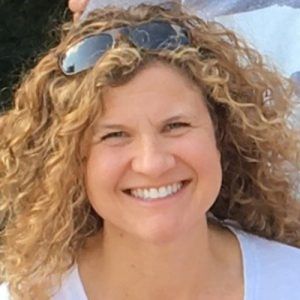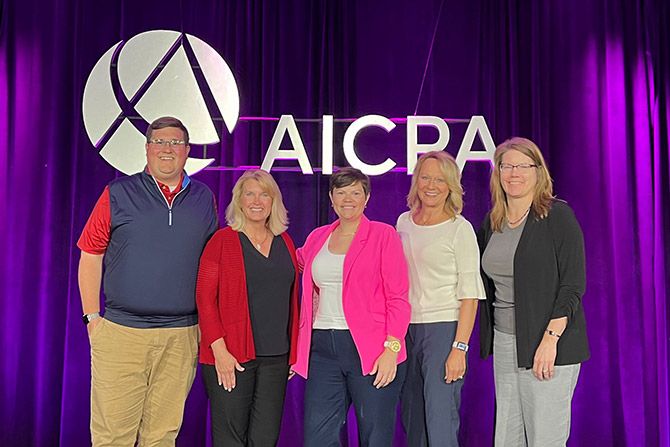The times they are a-changing and, now, a new NASBA task force is examining how CPA licensure may need to change as well.
When Stephanie M. Saunders, CPA, shareholder of Saunders & Saunders PC, stepped into her role as the 2023-2024 chairman of the National Association of State Boards of Accountancy (NASBA), she had been pondering about the possible need for changes to the CPA licensure model. “I recommended to NASBA leadership that now is the appropriate time to create a task force to examine the subject,” she says. “The AICPA had already formed their National Pipeline Advisory Group (NPAG) to study and provide solutions to the CPA pipeline issue, so the timing was right.”
During her inaugural address at NASBA’s 116th Annual Meeting, Saunders announced the formation of the Professional Licensure Task Force. The group’s charge is to consider new concepts for CPA licensure that may be included in the Uniform Accountancy Act (UAA) in order to update the current licensure model.
Why Now?
Central to the timing of the licensure discussion is the CPA pipeline crisis. “State Boards of Accountancy, State CPA Societies, and academia are all actively discussing the pipeline. The mainstream media are reporting on it,” Saunders points out. “We need to understand why students are choosing majors other than accounting and why CPAs are leaving the profession in record numbers.”
Saunders considers work-life balance the No. 1 reason behind decisions to enter and leave the profession. Data also shows the 150-hour education requirement, starting salaries that aren’t commensurate with the additional education, and the image of the profession in general as additional barriers to entry.
“Five years of college can be a financial challenge for students,” Saunders says, referring to the 30 extra hours needed to meet the 150-hour requirement. “If we want to increase the pipeline and have a more diverse profession, it needs to be more affordable for people to obtain the extra, flexible 30 hours.”
Saunders says NASBA is unable to fix the current work-life balance demands, starting salaries, or the current image of the profession, “but Boards of Accountancy provide direction, as regulators, to their state legislatures on the licensure model via statutes and rules. And I wanted a task force comprised of different stakeholders to ask what we can do to pass muster.”
Whatever the solution, Saunders emphasizes that it must be a collective effort.
Several State CPA Societies and State Boards of Accountancy have already discussed reverting to 120 hours of education and two years of experience. Concerned about how such moves would impact substantial equivalency, mobility, and reciprocity, Saunders was part of a group that met with leaders in those states. “We really want to work with these states,” she says. “It took us 20 years to reach consensus on the 150-hour education requirement and become substantially equivalent. Now, we could be facing potential problems, including the loss of CPA mobility.”
The Concept
The goal is to create a long-term, flexible plan that can offer a path to licensure that would not be on an accredited transcript but is still defined in great detail. It would include an education and experience component to measure competency to become a licensed CPA and would be considered equivalent to the current 150-hour pathway as defined in the UAA as an alternative to the flexible 30 hours needed for licensure.
The concept would:
- Be cost effective so that graduates who have a bachelor’s degree with an accounting concentration may get right to work earning money.
- Establish an equivalent pathway in the UAA to meet the flexible 30 hours component.
- Protect the public interest.
- Allow for quick pivots in the future. It would not rely on universities to change their curriculum.
- Meet requirements that may already be in place within larger accounting firms.
A Task Force of Stakeholders
In addition to Saunders, who is chairing the Professional Licensure Task Force, nine members were chosen for their knowledge of the profession and representation of various stakeholder groups, including the NASBA Board of Directors, the AICPA, member Boards of Accountancy, and State CPA Societies.
“Each of the task force members were extremely enthusiastic to be part of the process,” Saunders recounts of approaching the potential members. “Everyone was on board and excited about it.”
The task force includes Bob Cedergren, chairman of the Minnesota Society of CPAs; Sue Coffey, CEO of Public Accounting for AICPA; Megan Durst, Accountancy Board of Ohio; Steven Grice, Alabama Board of Accountancy; Nicola Neilon, NASBA director-at-large and chairman of the UAA Committee; David Noble, chairman of the South Carolina Association of CPAs; Boyd Search, CEO of The Georgia Society of CPAs; William Treacy, executive director of the Texas State Board of Accountancy; Ken Bishop, task force observer and president and CEO of NASBA; and Dan Dustin, task force staff liaison and vice president of state board relations for NASBA.
Just two weeks after Saunders began her term as chairman, the task force held its first meeting to review the concepts and determine their focus.
What’s on the Table . . . and What’s Not
Right off the bat, Saunders was very clear about what the task force would be considering as solutions and what it would not be considering. While the task force is open to looking at many different options for pathways to CPA licensure, Saunders explained that the current licensure model of 150 hours, one year of experience, and the CPA Exam would remain intact.
“I explained that since the 150 hours is currently in discussion among the states, it was not what this task force would touch upon due to the importance of mobility,” Saunders says. “We have to look at what we can fix, and the task force agreed.”
The task force’s first meeting covered the history of the current education model, the education required under international Mutual Recognition Agreements, and the AICPA-NASBA Experience, Learn, and Earn (ELE) program and other experiential learning models that were introduced in 2023.
Task force members agreed that the general principles adopted for ELE—cost-effectiveness, a rigorous education component, and scalability to firms and employers of all sizes—should apply to the development of a Structured Professional Program.
The task force narrowed its discussions to focus on:
“…a structured experiential learning program that would provide for education, documented experience, and other elements that would provide an equivalent path to licensure without the need for a fifth year of education to complete a 150-hour education program on an accredited transcript. This additional path, to be defined in greater detail, would include both an education and experience component to measure a candidate’s competency to be licensed as a CPA and would be considered equivalent to the current 150-hour pathway defined by the Uniform Accountancy Act. The development of a structured professional program would require legislative and rule changes in some states, which may impact interstate mobility in some states until all states have adopted the new equivalent path.”
The task force held a webinar to gather input from an even larger group of stakeholders. The expanded group of invitees included current members of State Boards of Accountancy, state board executive directors, task force members, and NASBA UAA Committee members. Attendees received an update on the task force’s efforts to date and were encouraged to ask questions, which Saunders says was critical to the process. “We need accountancy boards to thoughtfully consider and agree this direction makes sense because they are the ones that will need to support any necessary changes to the statutes and rules in their jurisdictions.”
The result of the additional feedback was a Concept Exposure document, which was sent to the stakeholder group for review and feedback in late December 2023. The comment period ended March 31, 2024.
Flexibility for State Boards
Saunders says the goal is to create a long-term, flexible plan that avoids a patchwork of efforts around the country. “We must ask ourselves if we can offer a path to licensure that would not be on an accredited transcript but is still defined in great detail,” she explains. “It would include an education and experience component to measure competency to become a licensed CPA and would be considered equivalent to the current 150-hour pathway as defined in the UAA as an alternative to the flexible 30 hours needed for licensure.”
State boards could create their own programs that would contain key elements and competencies. It would allow individuals to go right to work in the accounting profession and begin building those key competencies. NASBA, state boards, or other third parties would approve an individual at a firm or organization, who would ultimately ensure the competencies were met and oversee the testing, review, and evaluation.
Saunders says the concept ticks a lot of important boxes, as it:
- Ensures cost effectiveness by allowing students to graduate with a bachelor’s degree with an accounting concentration and get right to work earning money;
- Establishes an equivalent pathway in the UAA to meet the flexible 30 hours component;
- Protects the public interest;
- Allows for quick pivots in the future by not relying on universities to change their curriculum; and,
- Leverages existing programs in larger accounting firms that may already meet the requirements.
Deep dive details, such as will the experience window be longer or will there be a minimum number of hours, have not been developed yet. That step will be challenging, Saunders acknowledges. “But the big picture goal is a model that can keep up with the pace of change and can be reviewed as needed.”
For any solution generated, there may be a transition period, much like what took place for the change from 120 hours to 150 hours of education. Some states will face bigger challenges because 150 hours is hardwired into their state statutes. Saunders says once the concept is agreed upon, the task force will address how state boards can work with their state legislatures.
There’s a long, tough road ahead, but Saunders describes herself as an eternal optimist. “Many professionals embrace 150 hours and say their firms continue to seek out and hire those individuals,” she says. “But when there is a lack of people entering the profession, you need to act accordingly because, based on an AICPA study, in 15 years, 75% of current licensees will be gone.”
Working Towards the Green Light
In June, NASBA brought the development of the concept to the Eastern and Western Regional Conferences where board members from the 55 U.S. accounting jurisdictions received more information and had additional opportunities to provide comment.
Once the state boards give the green light, the language to update the UAA will go through an exposure process led by the joint AICPA/NASBA UAA Committee.
“The concept will be vetted by all stakeholders, and if all goes well, we hope that in the fall, it will be presented to and voted on by the NASBA and AICPA boards of directors to update the UAA language for states to adopt,” Saunders says.
It’s an aggressive but necessary timeline. “One of our task force members related our situation to a train that has already left the station,” Saunders says. “We don’t want to jump too far ahead until we feel everyone is on board, but right now, some states lack the number of CPAs to perform government audits. Time is not on the profession’s side right now.”
Embracing Change
For those who are not in favor of changing the way CPAs are licensed, Saunders emphasizes the need to continually evolve the profession. “The world is changing so quickly,” she says. “Think about our financial markets. We’re in a global economy. Other countries are also dealing with this type of situation. It will become a larger problem if we do not have the necessary accounting experts.”
Saunders feels the pressure from the pace of change every day in her own practice. “As a CPA, I can tell you I am not performing the same services as I did 40 years ago or even five years ago. Our small practice is incorporating artificial intelligence into much of what we do. CPAs encounter change all the time through pronouncements, tax law, and technology. The model must continue to evolve; otherwise, we lose the trusted advisor accounting space.”
Circling around to the “train has left the station” analogy, Saunders asks, “Who is going to be the conductor here? I want it to be the State Boards of Accountancy because, at the end of the day, it is their legislatures that are going to adopt the rules.”
Two states already have legislation in the works to revert to 120 hours, with more states planning to introduce similar legislation in 2025. “It’s out there,” Saunders cautions. “These discussions are currently happening among state boards and state societies. So, we need to do this together with open, honest conversations while we build future relationships for the profession and the public.”
Natalie Rooney is a freelance writer from Colorado who has been writing for State CPA Societies for more than 20 years. She can be reached at nrooney@centurytel.net.
Reprinted with permission of The Georgia Society of CPAs.









